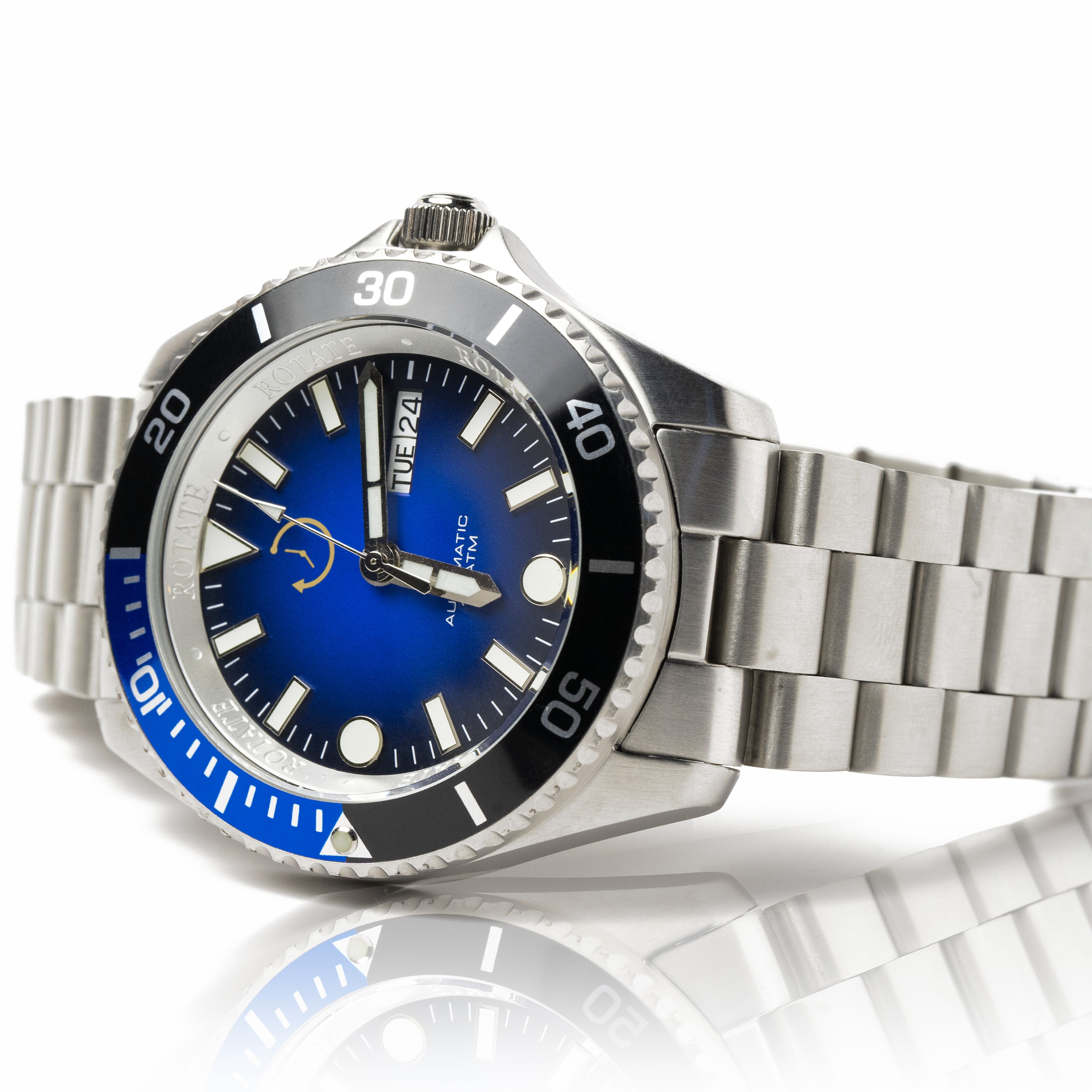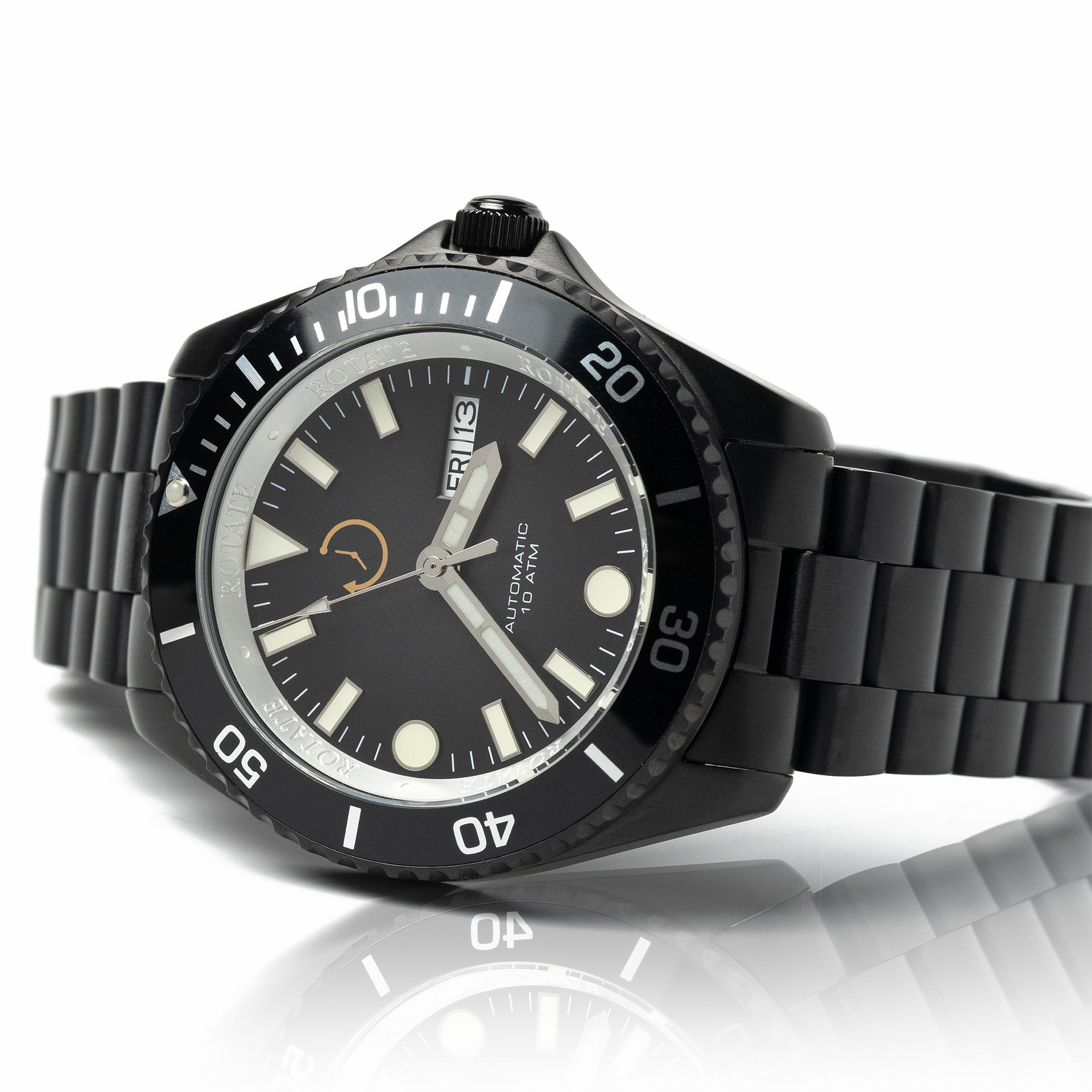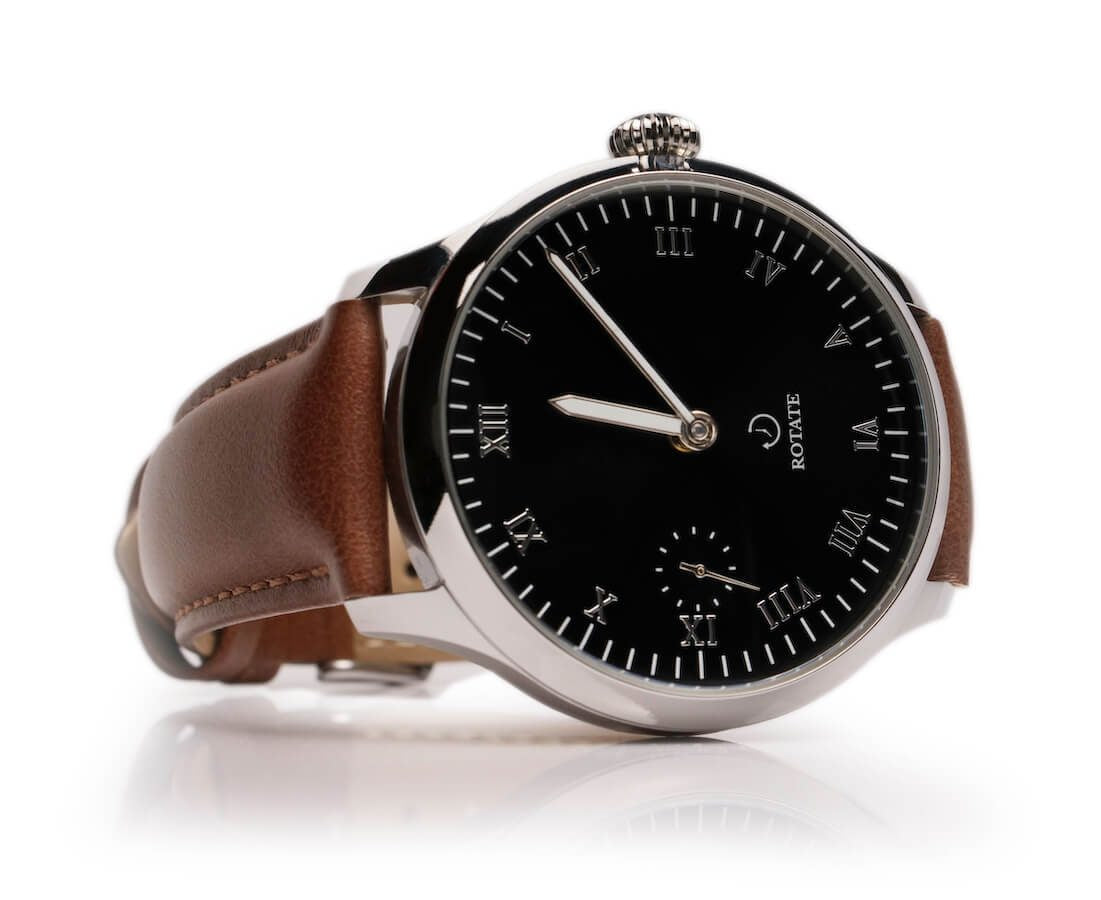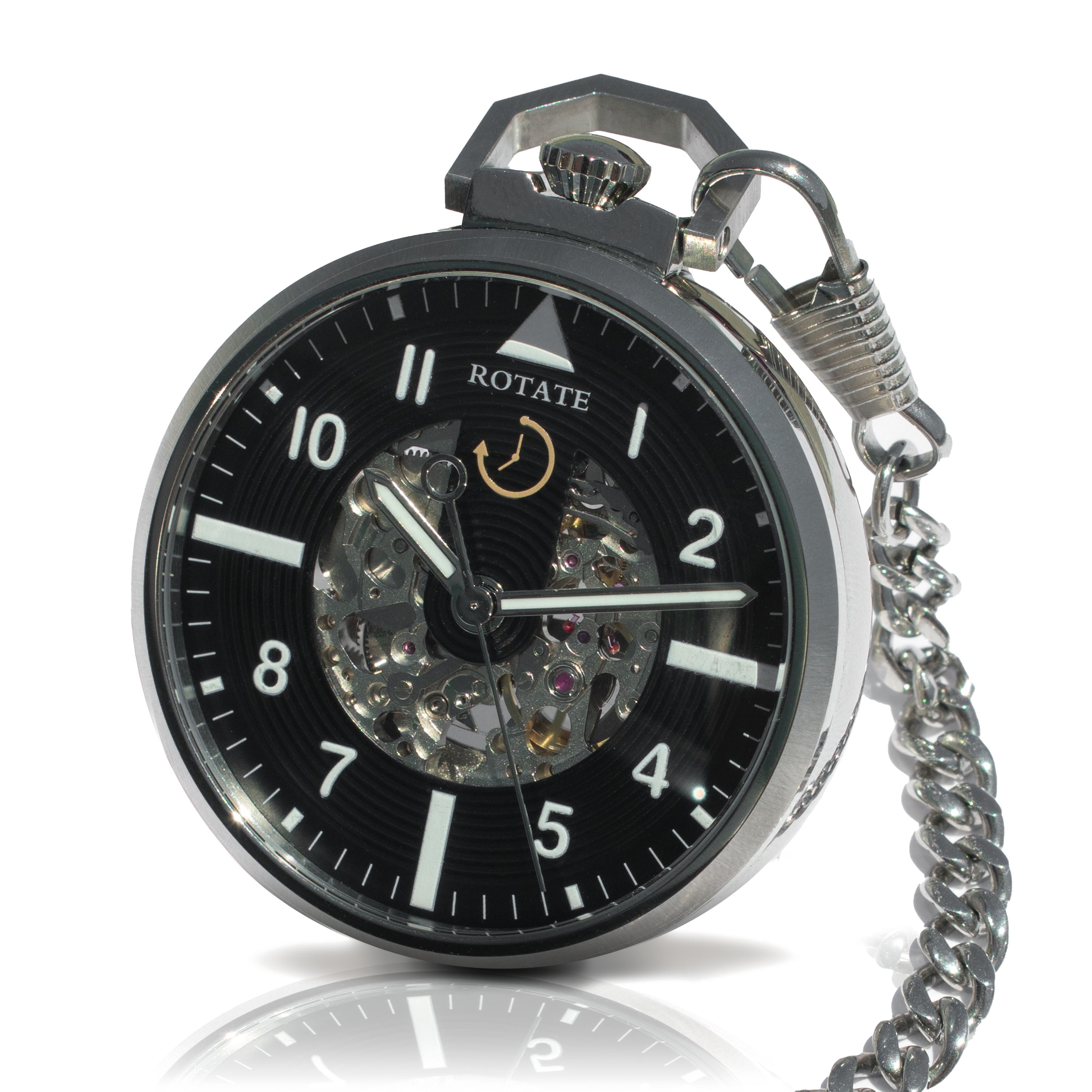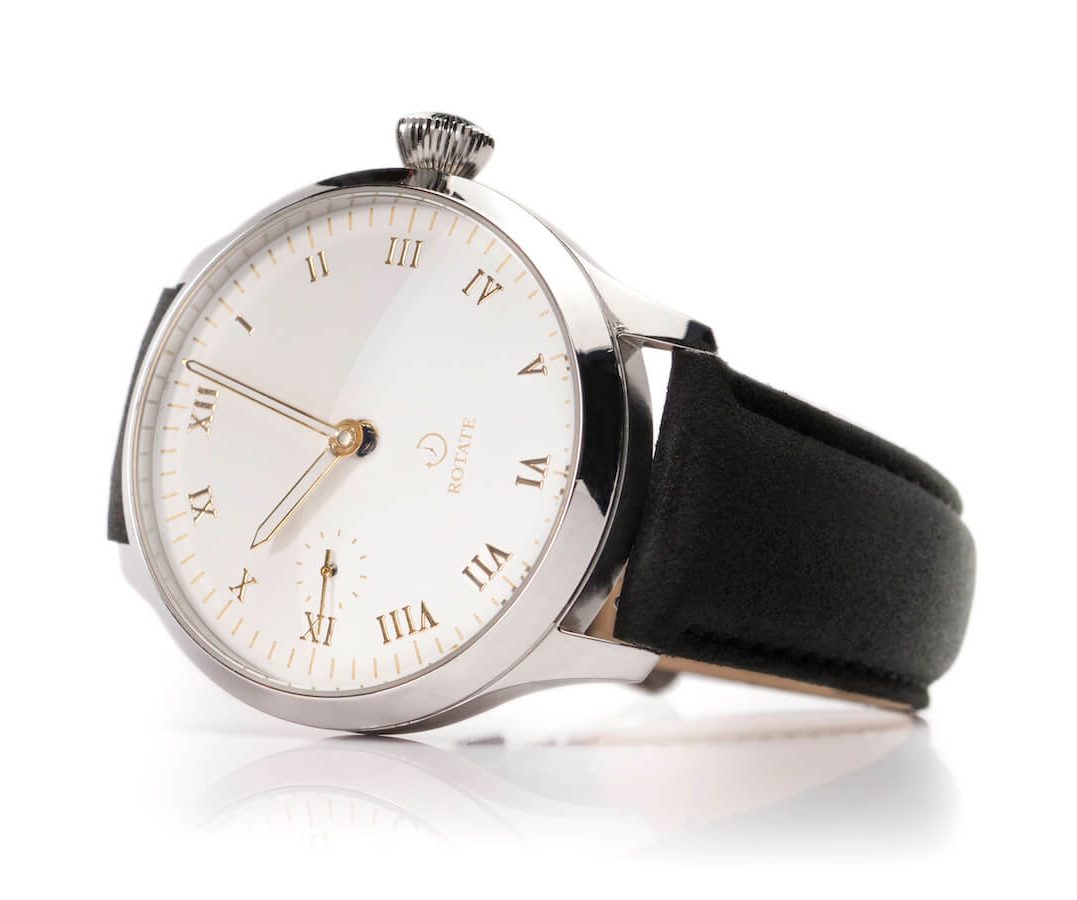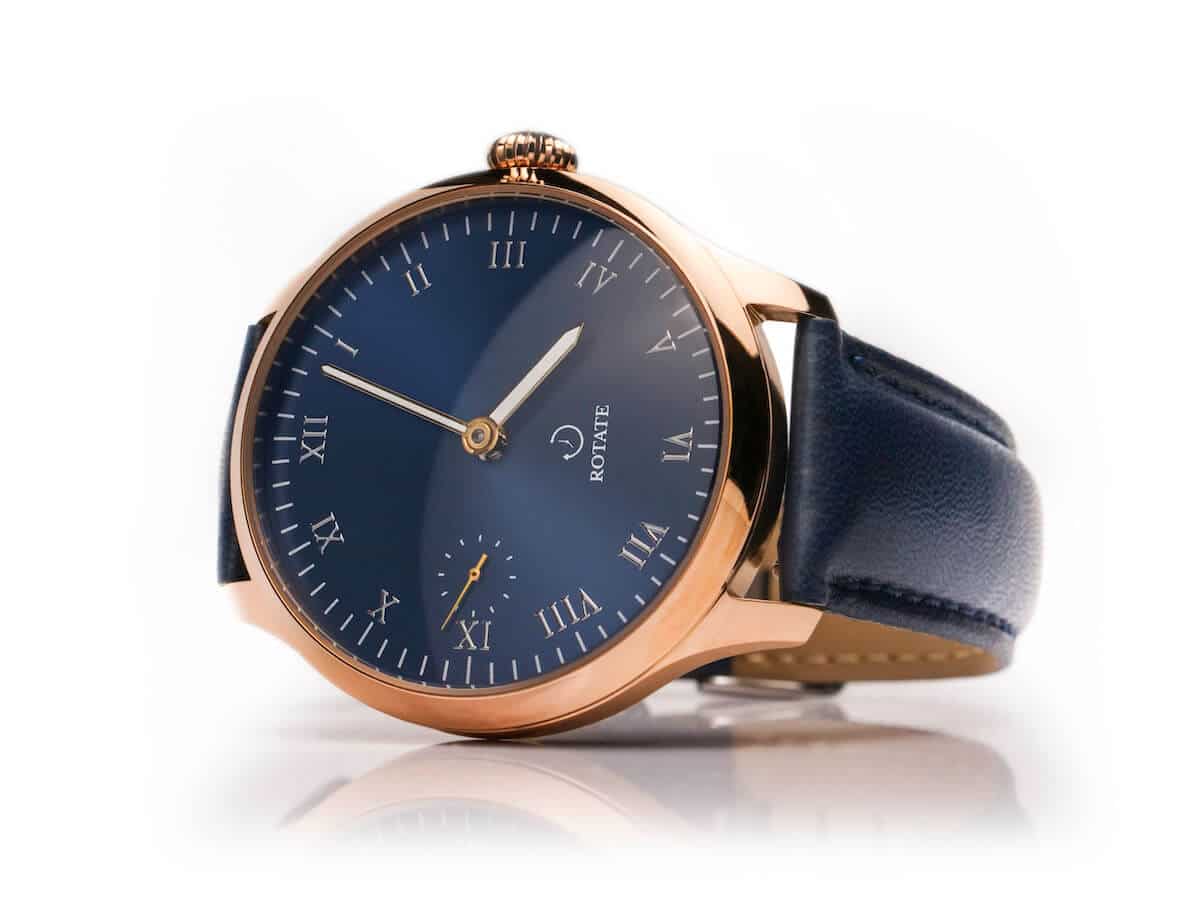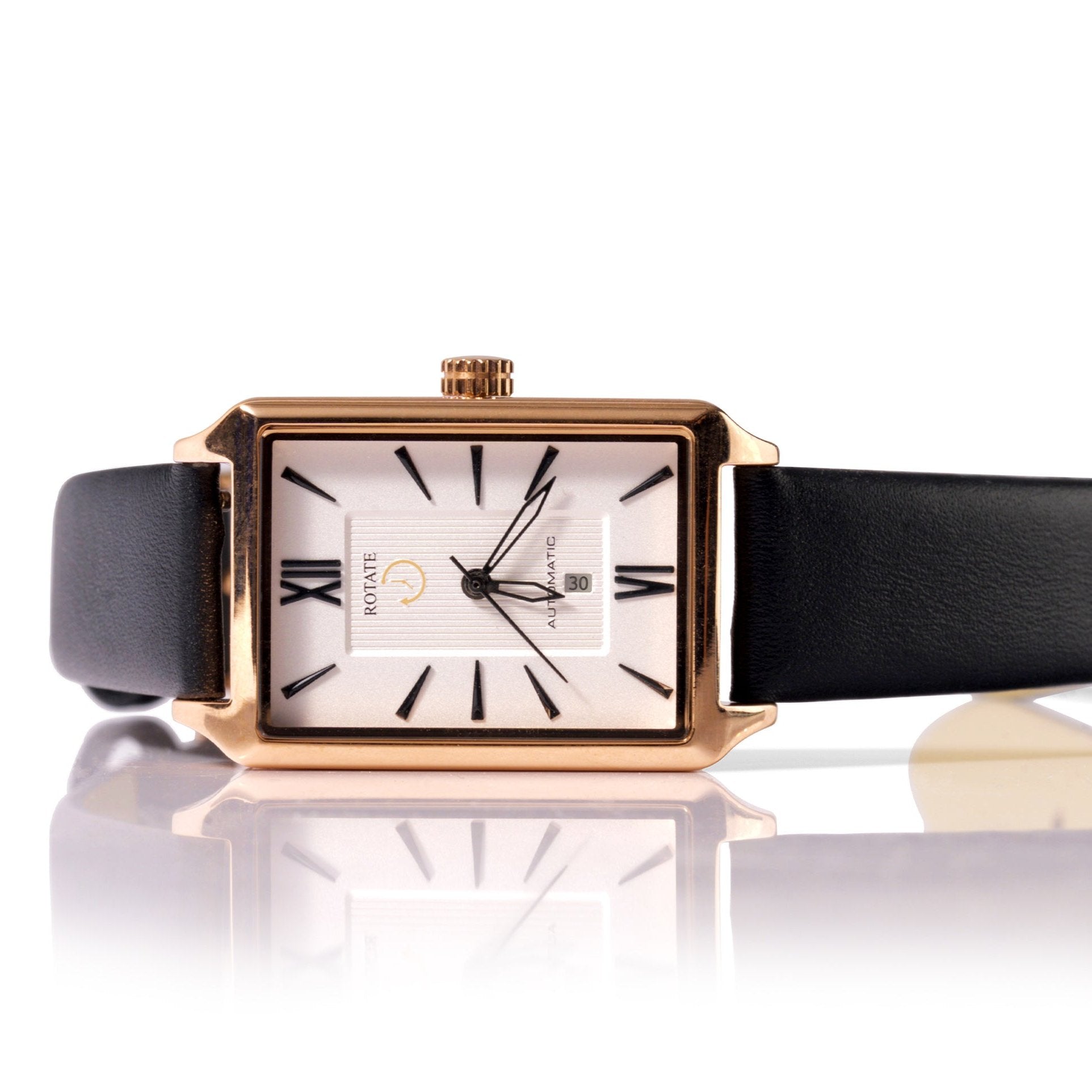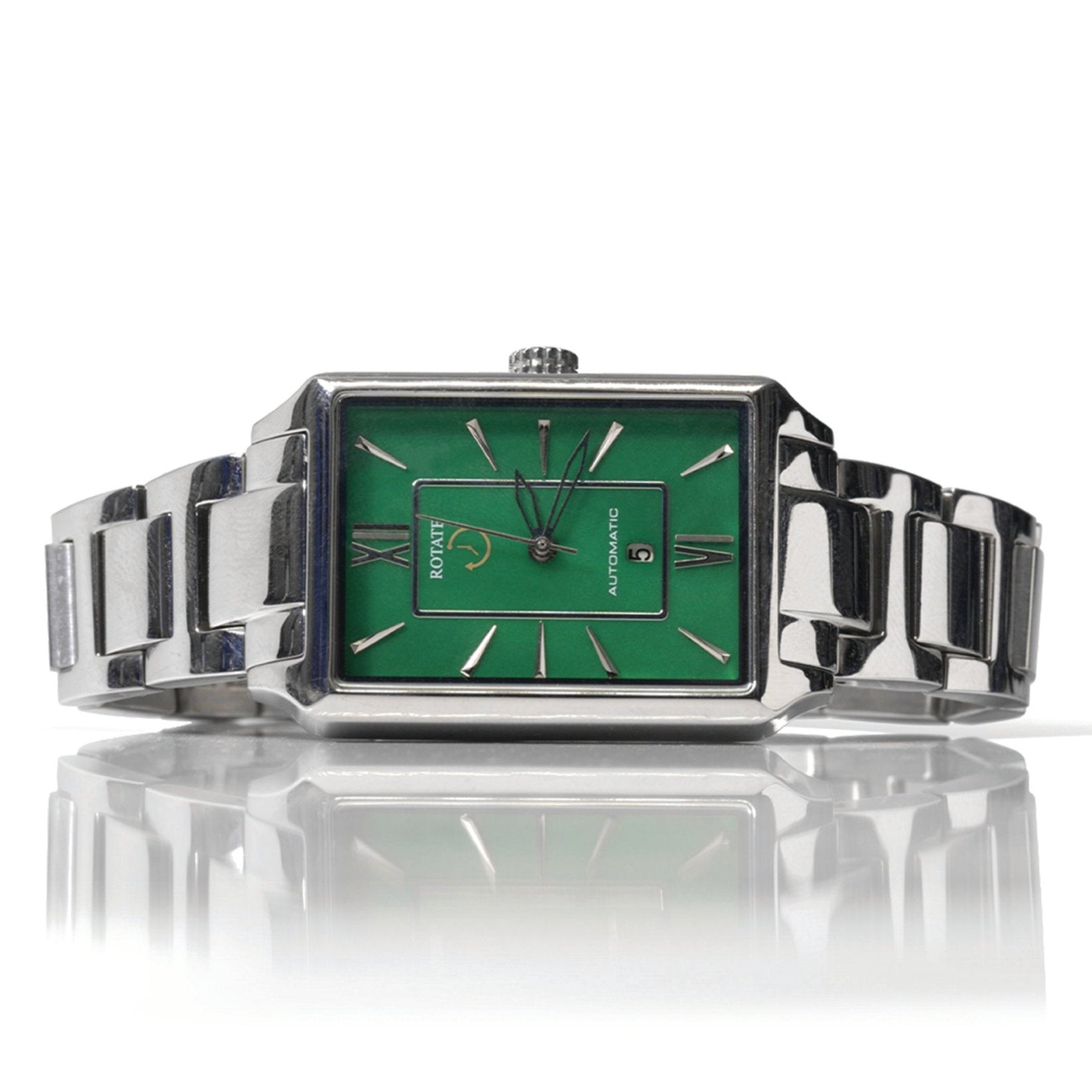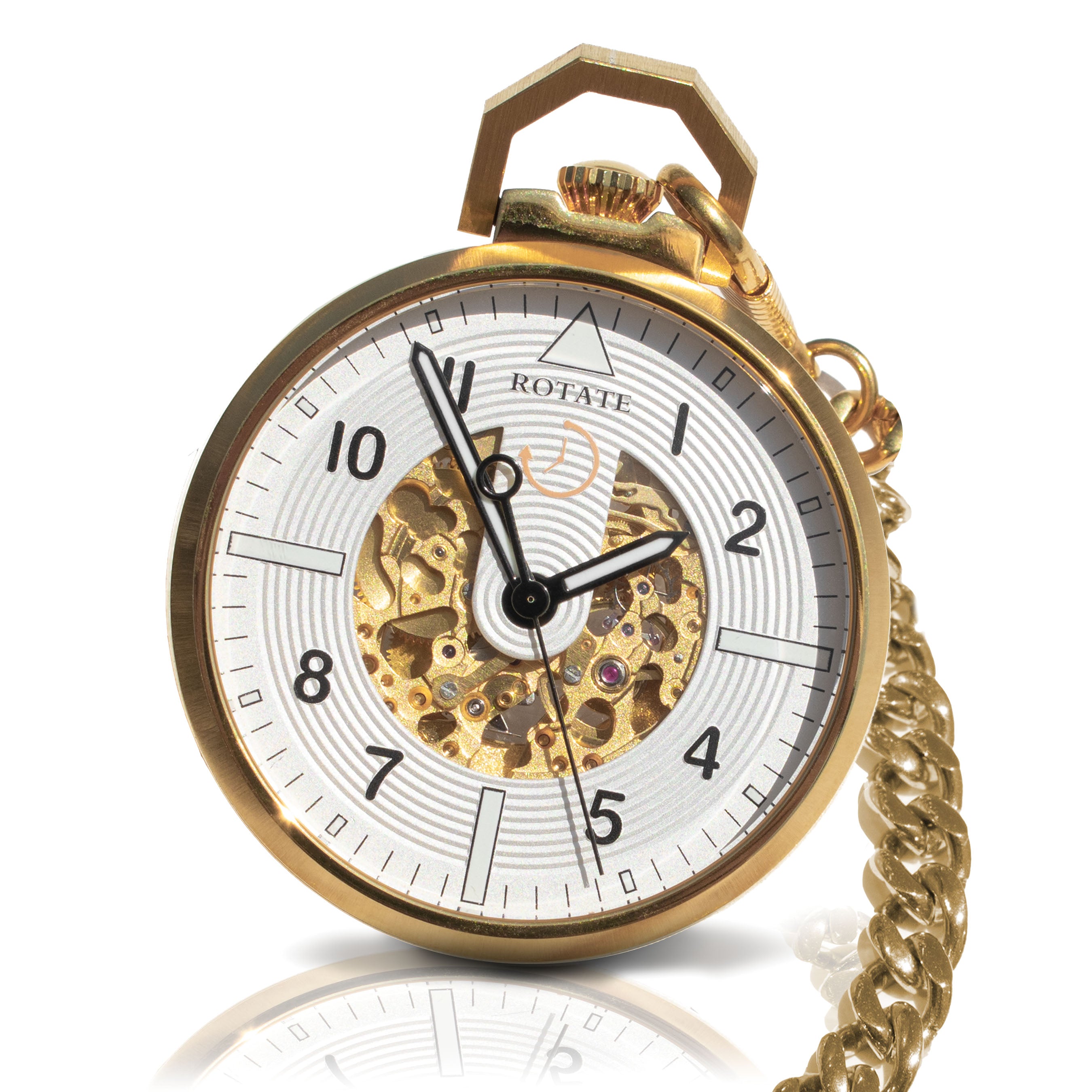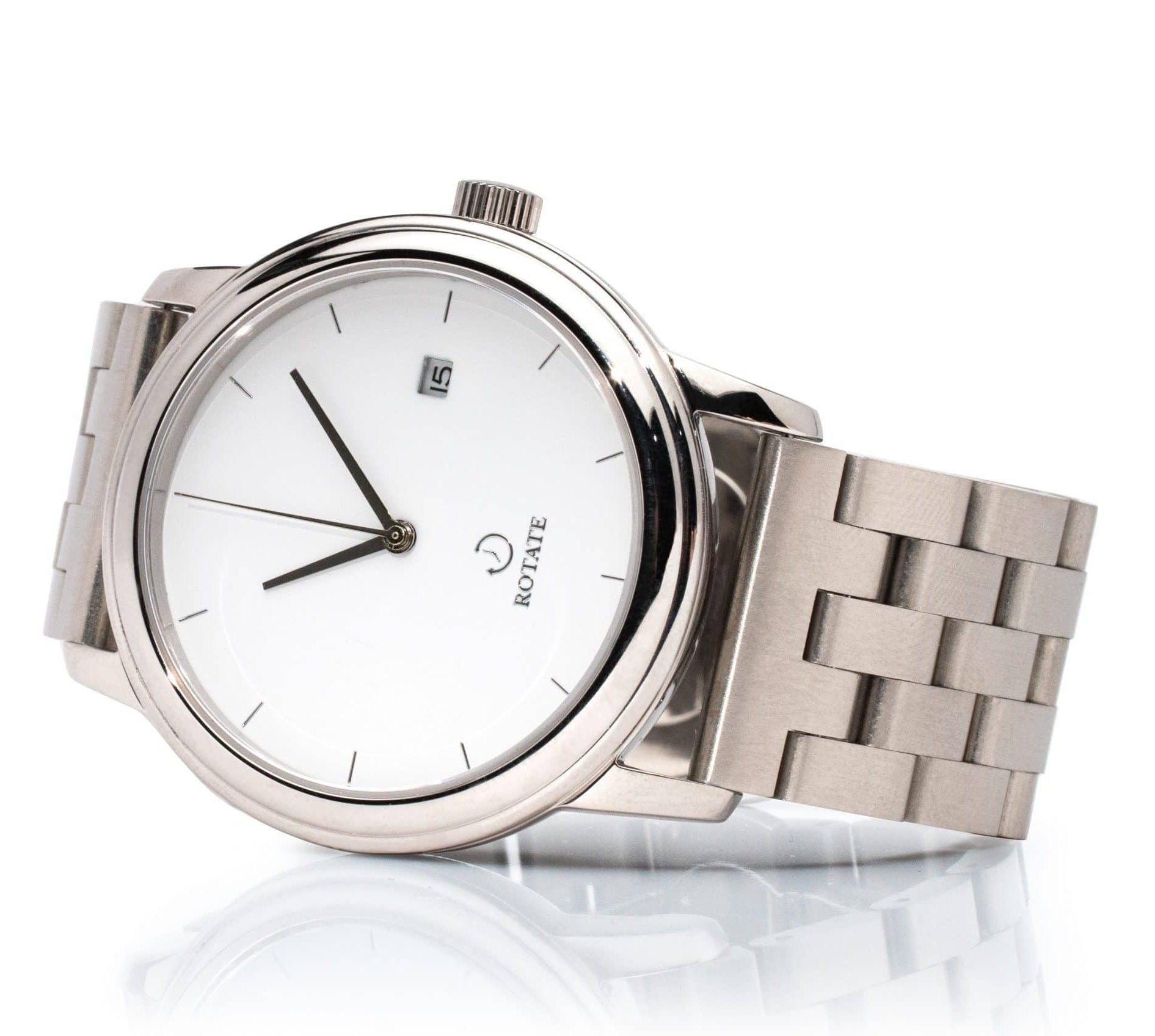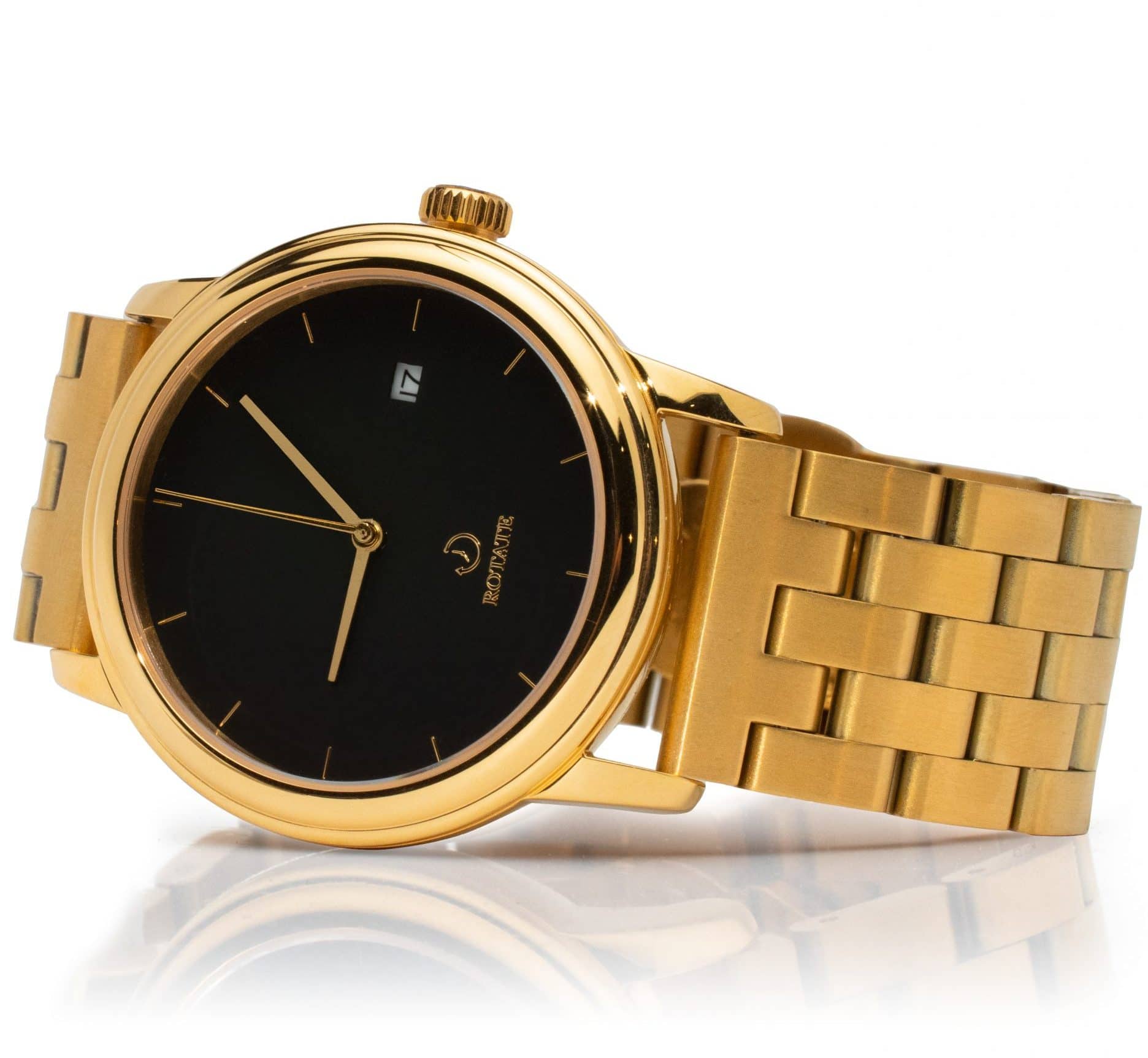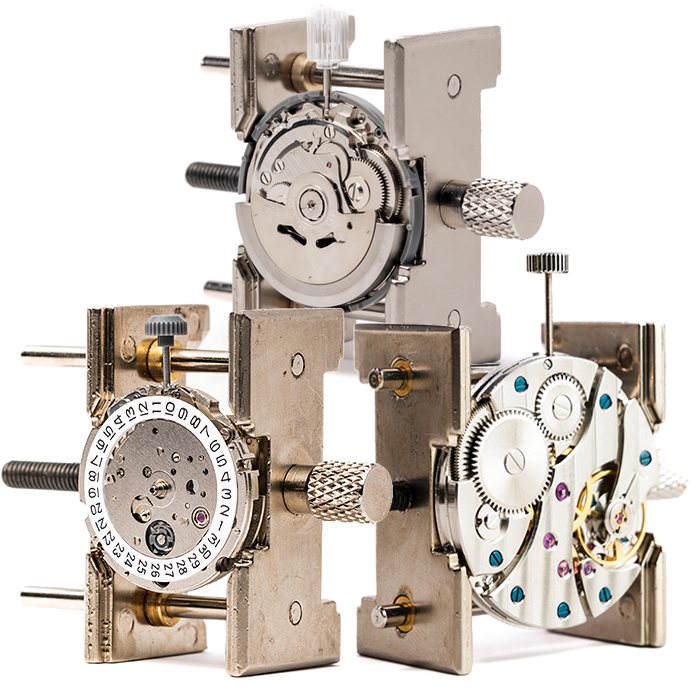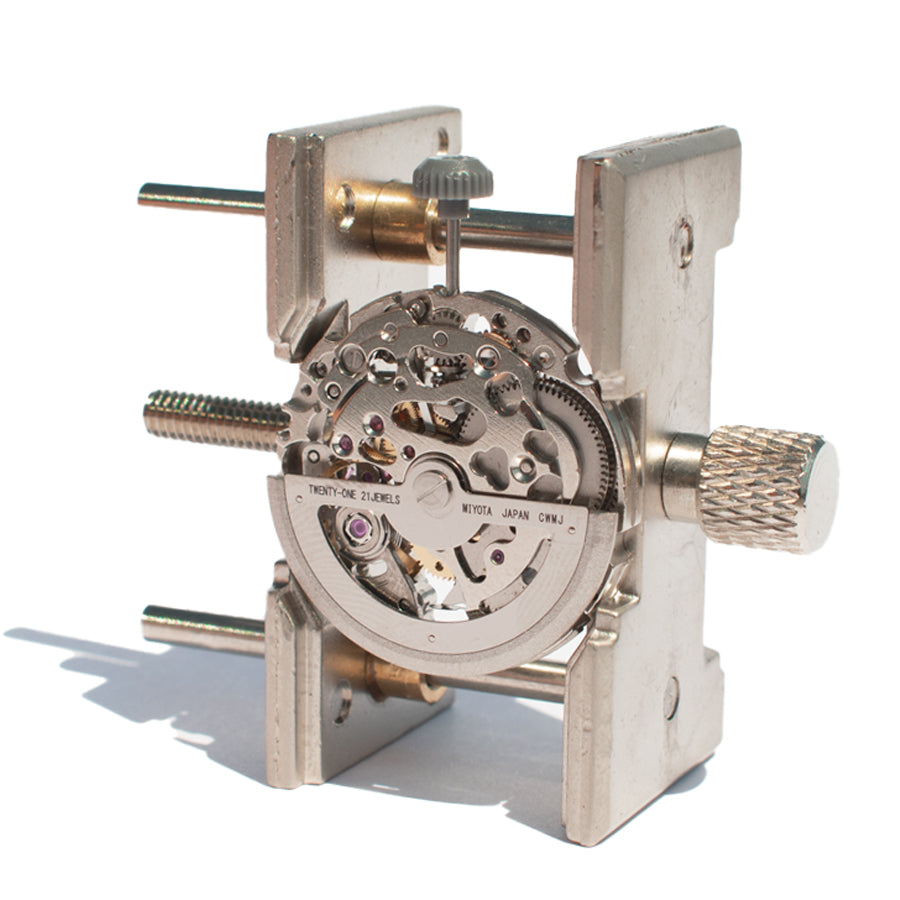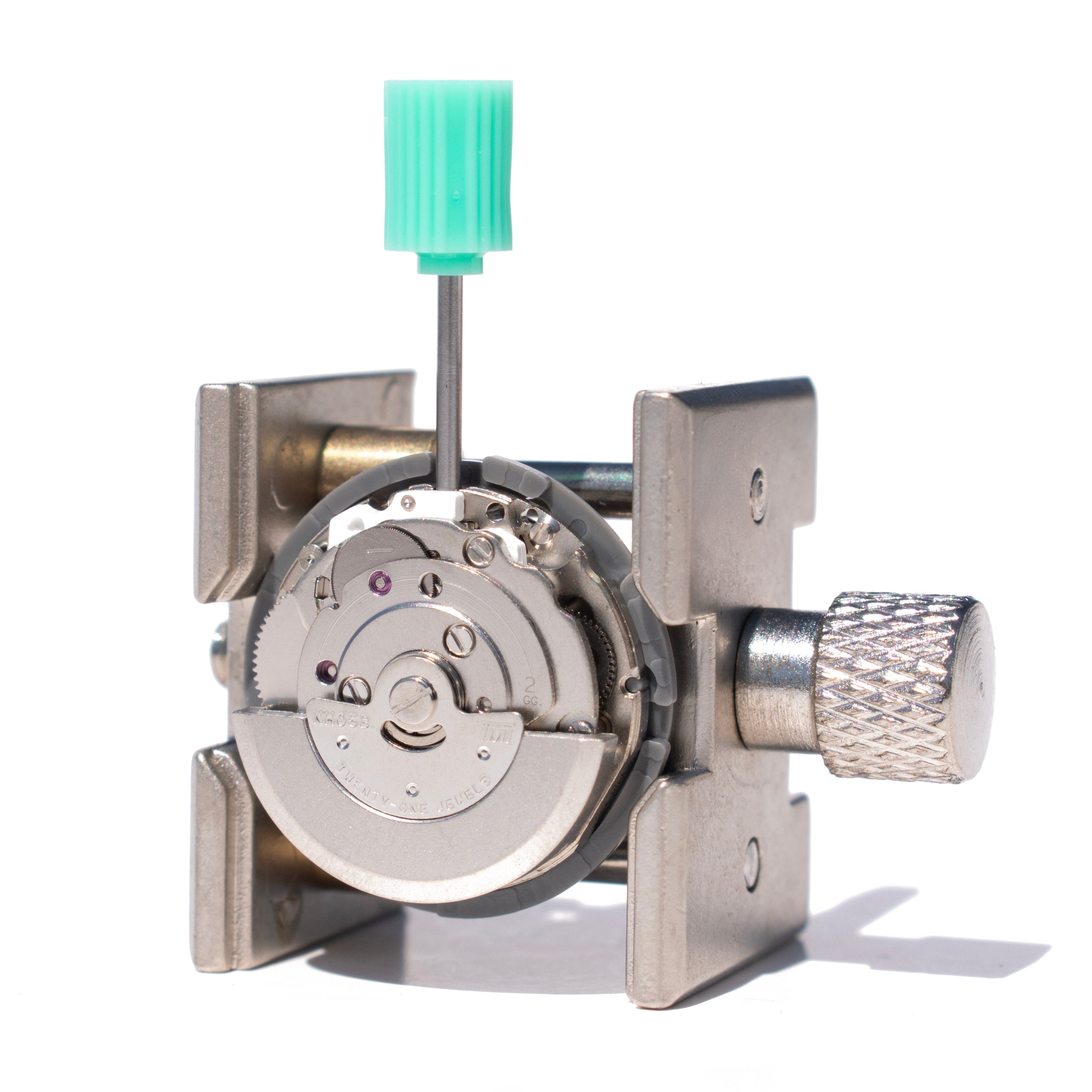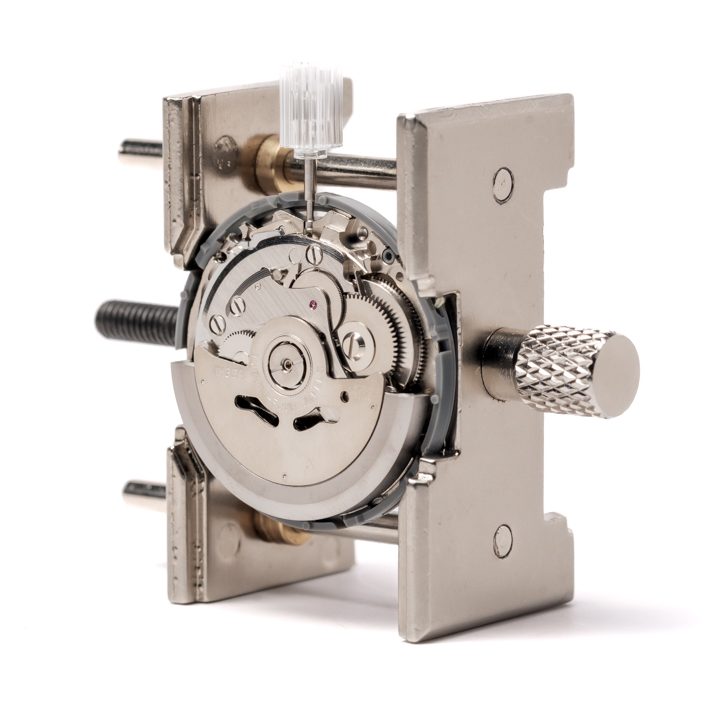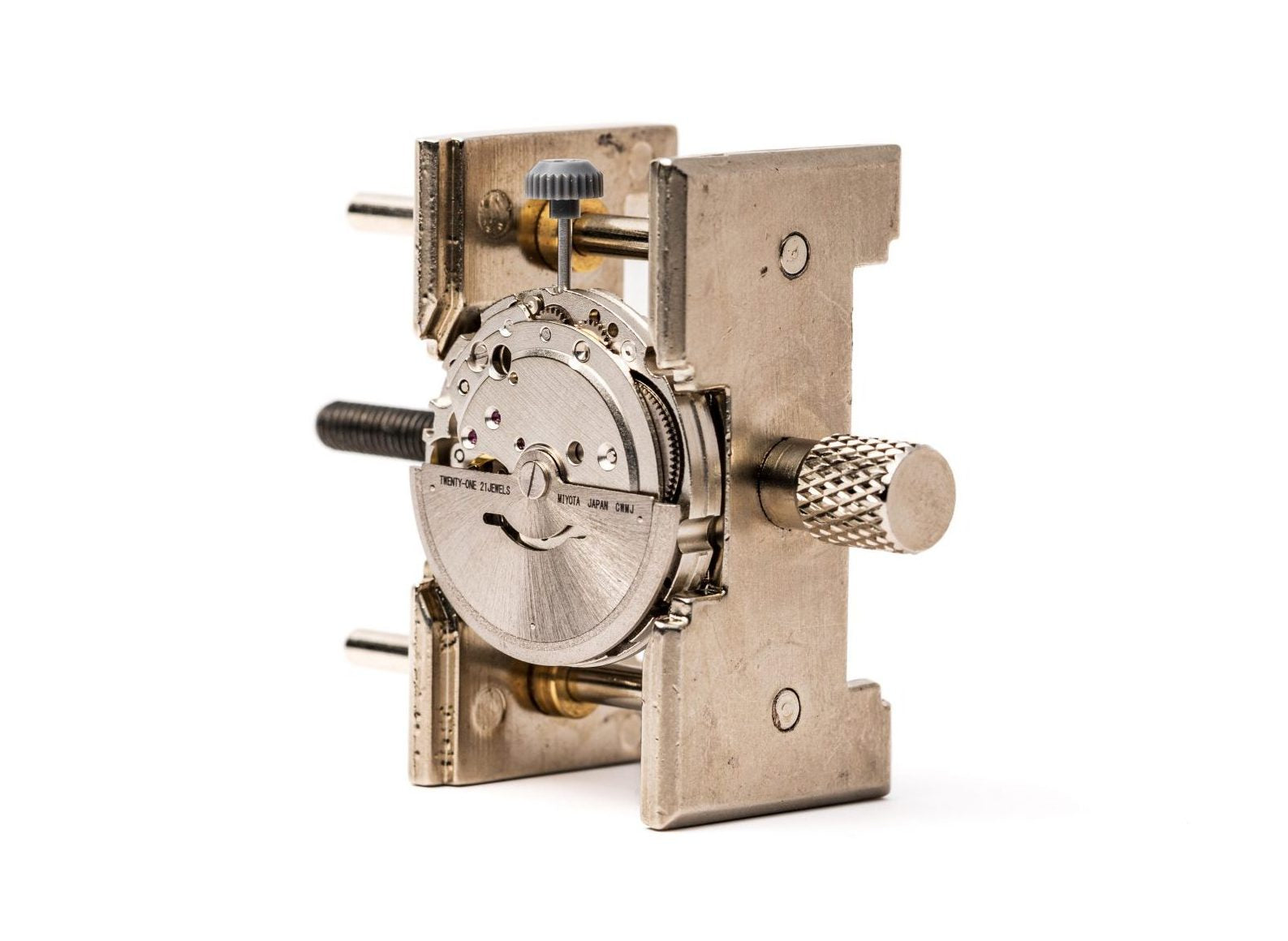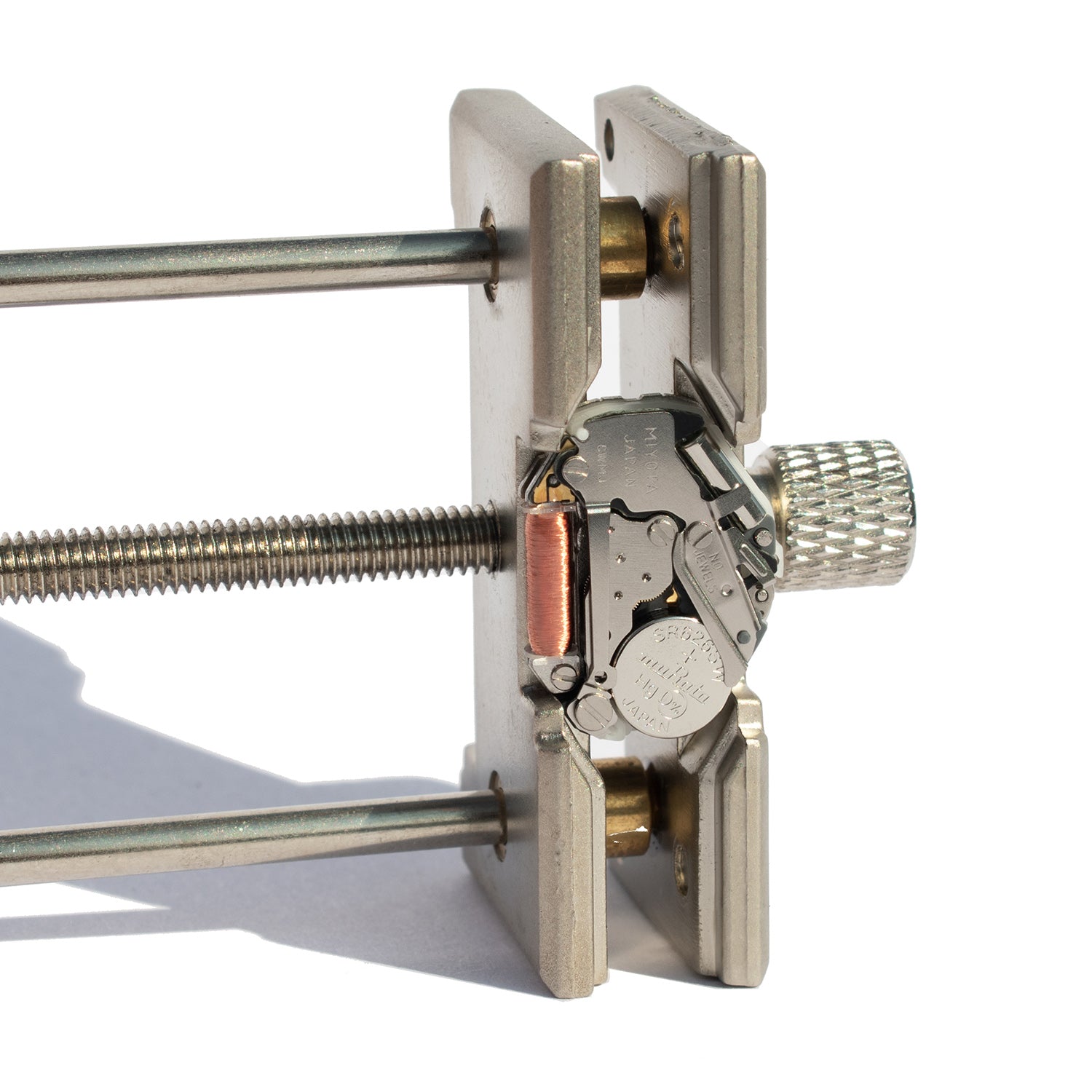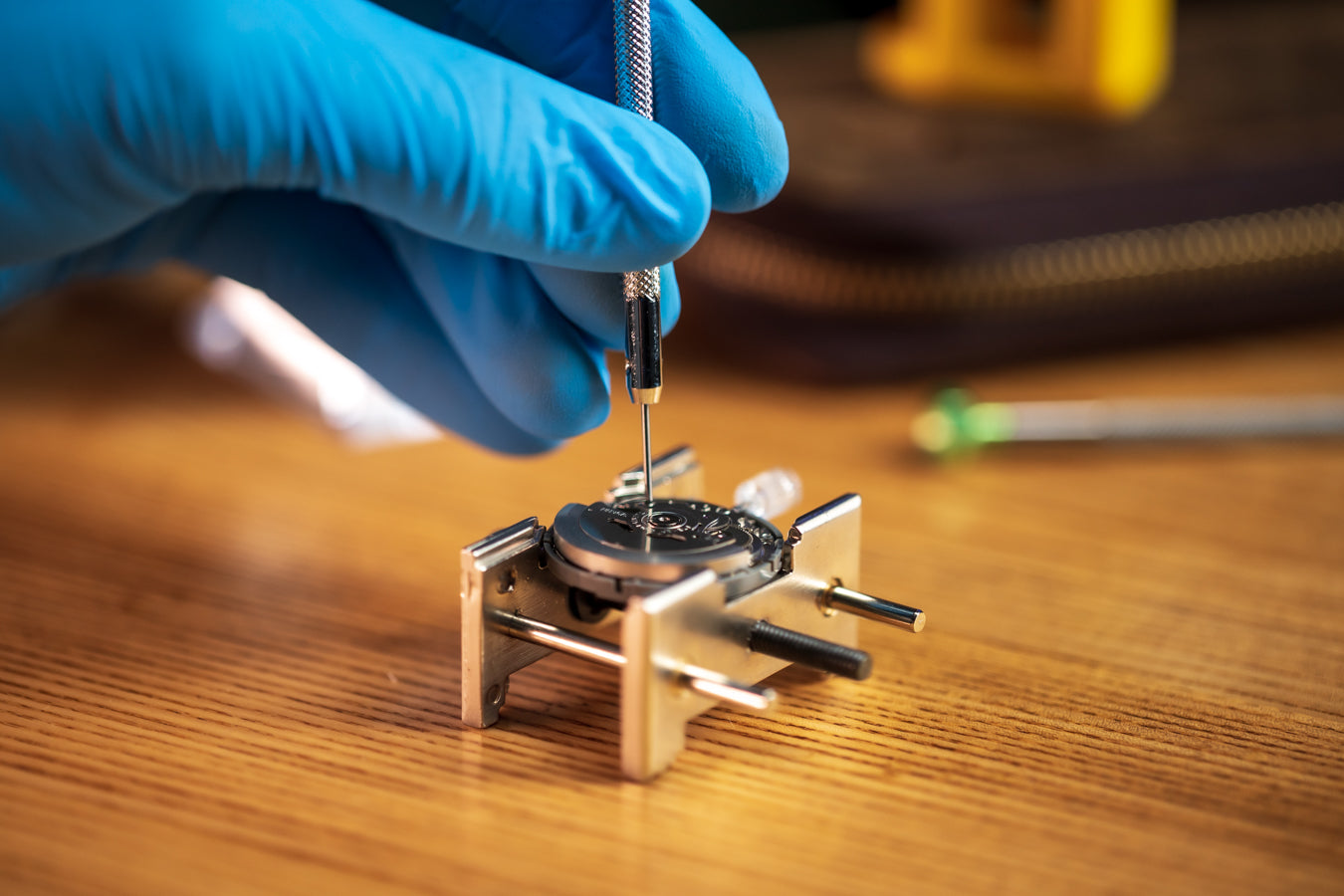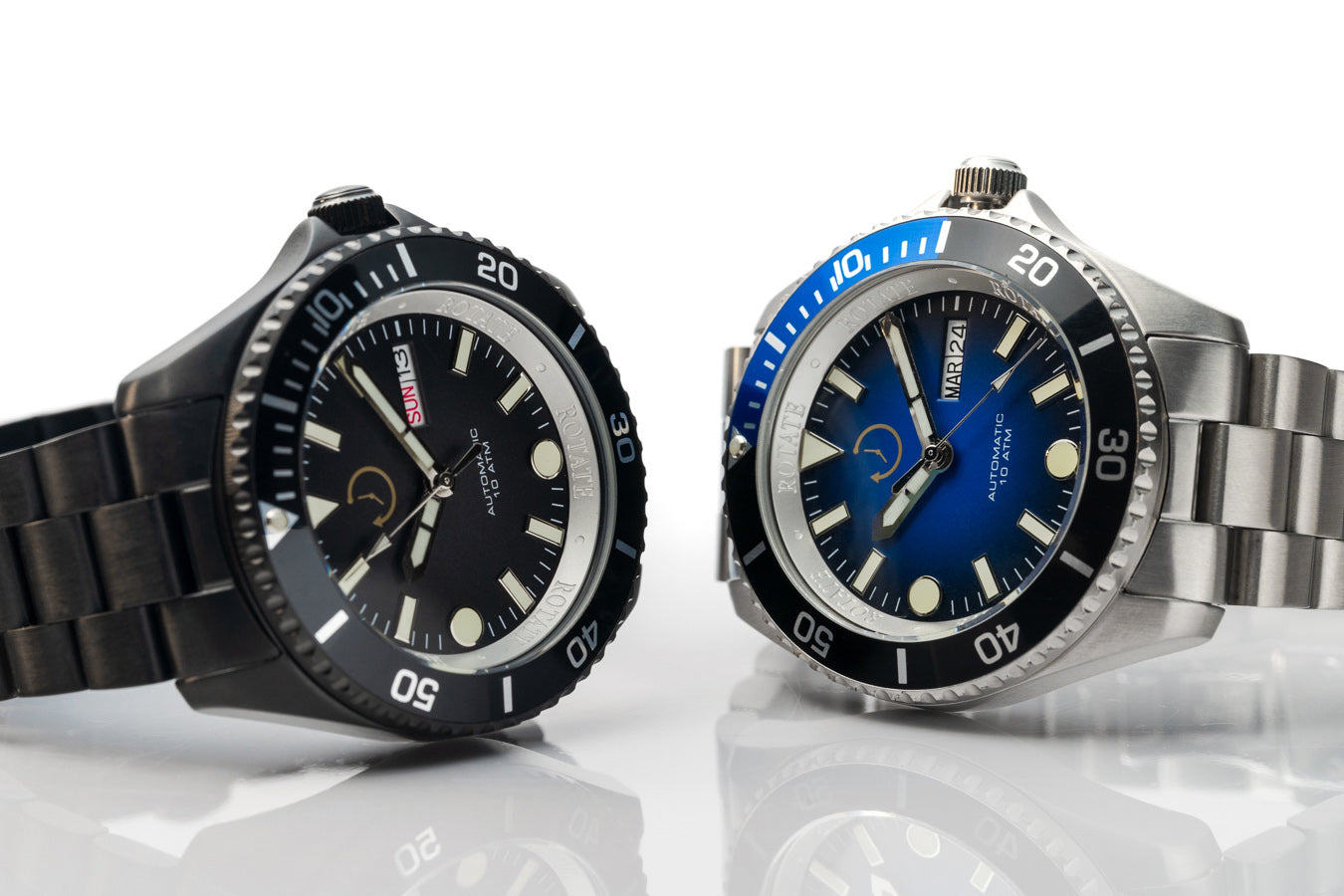
Mechanical Watch Basics – How To Wind & Set
Learning how to wind a mechanical watch and how to set a mechanical watch isn’t difficult, but small quirks and differences in design can make each model unique. Follow this guide for detailed, step-by-step instructions so you can confidently care for your timepiece.
How to Wind a Mechanical Watch: Step-by-Step
Step 1: Remove the Watch from Your Wrist
We recommend winding your watch while it’s not on your wrist. The inner tube of the crown is a relatively fragile component that bends easily, so winding while the watch is off can help with longevity.
Step 2: Hold the Crown Securely
Hold the crown between your thumb and index finger.
Step 3: Wind the Crown Upward
Start winding the crown away from you. You don’t need to exercise extraordinary caution, but don’t use excessive force.
Step 4: Wind Until You Feel Resistance
Depending on the movement, wind until you feel the slightest bit of resistance. Be cautious not to overwind. If you look up your specific movement’s specs, it’s easy to find how many turns the manufacturer recommends.
Read More: Top 5 Swiss Movements for Automatic Mechanical Watches
How to Set the Date on a Mechanical Watch: Step-by-Step
Step 1: Locate the Crown Positions
The crown typically has three positions. The first (pushed in) is for winding, the second is for setting the date.
Step 2: Pull the Crown to the Second Position
Gently pull the crown back to the second position. This position allows you to change the date.
Step 3: Turn the Crown Clockwise
Turn the crown clockwise until you reach the correct date.
How to Set the Time on a Mechanical Watch: Step-by-Step
Step 1: Pull the Crown Out to the Final Position
Pull the crown all the way out from the watch base. Some watches allow for second-hand setting, as well as minute and hour hand adjustment.
Step 2: Turn the Crown to Set the Time
Slowly move the crown in a clockwise direction until the right time is set. We recommend turning the crown only one direction; if you miss the time, keep turning clockwise until you reach the right time again.
Step 3: Push the Crown Back In
Once your day/date/time are set, press the crown back into the “zero” position. To ensure it is pressurized and water-tight, screw the crown down next if needed.
Tips for Winding and Setting Your Mechanical Watch Safely
-
Always remove your watch from your wrist before winding.
-
Wind slowly and gently until you feel resistance—never force the crown.
-
Set the time in one direction only to avoid damaging the movement.
-
If your watch has a screw-down crown, ensure it’s secure after setting.
-
Refer to your specific movement’s instructions for optimal winding.
Final Takeaway
Winding and setting your mechanical watch doesn’t have to be intimidating. Follow these steps to keep your watch running smoothly, whether it’s a collector’s piece or your first mechanical timepiece. For more guides, check out Mechanical Watch Basics: How to Wind & Set and our guide to Japanese watch movements.
FAQs
Q1: How can I tell if my mechanical watch is fully wound?
A: A mechanical watch is fully wound when you feel significant resistance in the crown while turning it, indicating that the mainspring is fully tensioned. Stop winding at this point to avoid overwinding.
Q2: What's the difference between hand-wound and automatic mechanical watches, and how do I wind each?
A: Hand-wound watches require daily winding via the crown. Automatic watches wind themselves with wrist movement but can also be hand-wound. Both stop running when their power reserve depletes.
Read more: How Accurate Is an Automatic Watch?
Q3: My watch has a screw-down crown. What's the proper way to use it?
A: Unscrew the crown by turning it counter-clockwise until it pops out. Then, set the time and/or date. Push the crown back in and screw it clockwise to ensure water resistance.
Learn more: Water-Resistant vs Waterproof Watches: What’s the Difference?
Q4: How do I set the day and date on my mechanical watch if it has both functions?
A: The crown's second position typically controls the day and date. Pull the stem out to the next position and turn one way for the day, the other for the date.
Q5: What should I do if the crown on my mechanical watch feels loose or difficult to operate?
A: Avoid forcing it. Contact Rotate Watches for guidance. We can help troubleshoot the problem and provide instructions or assistance with repairs.
Q6: What Should I Do If My Mechanical Watch Is Not Running After Winding?
If your mechanical watch doesn’t start running after winding, gently shake it side to side to engage the movement. If it still doesn’t start, double-check that the crown is fully pushed in. Some watches need to be worn for a while to “wake up” if the power reserve was completely depleted. If issues persist, check out Loupe Magnifiers Guide for Watch Repair or consult a watchmaker.
{ "@context": "https://schema.org", "@type": "FAQPage", "mainEntity": [ { "@type": "Question", "name": "How can I tell if my mechanical watch is fully wound?", "acceptedAnswer": { "@type": "Answer", "text": "A mechanical watch is fully wound when you feel significant resistance in the crown while turning it, indicating that the mainspring is fully tensioned. Stop winding at this point to avoid overwinding." } }, { "@type": "Question", "name": "What's the difference between hand-wound and automatic mechanical watches, and how do I wind each?", "acceptedAnswer": { "@type": "Answer", "text": "Hand-wound watches require daily winding via the crown. Automatic watches wind themselves with wrist movement but can also be hand-wound. Both stop running when their power reserve depletes." } }, { "@type": "Question", "name": "My watch has a screw-down crown. What's the proper way to use it?", "acceptedAnswer": { "@type": "Answer", "text": "Unscrew the crown by turning it counter-clockwise until it pops out. Then, set the time and/or date. Push the crown back in and screw it clockwise to ensure water resistance." } }, { "@type": "Question", "name": "How do I set the day and date on my mechanical watch if it has both functions?", "acceptedAnswer": { "@type": "Answer", "text": "The crown's second position typically controls the day and date. Pull the stem out to the next position and turn one way for the day, the other for the date." } }, { "@type": "Question", "name": "What should I do if the crown on my mechanical watch feels loose or difficult to operate?", "acceptedAnswer": { "@type": "Answer", "text": "Avoid forcing it. Contact Rotate Watches for guidance. We can help troubleshoot the problem and provide instructions or assistance with repairs." } }, { "@type": "Question", "name": "What Should I Do If My Mechanical Watch Is Not Running After Winding?", "acceptedAnswer": { "@type": "Answer", "text": "If your mechanical watch doesn’t start running after winding, gently shake it side to side to engage the movement. If it still doesn’t start, double-check that the crown is fully pushed in. Some watches need to be worn for a while to 'wake up' if the power reserve was completely depleted. If issues persist, consult a watchmaker." } } ] }


